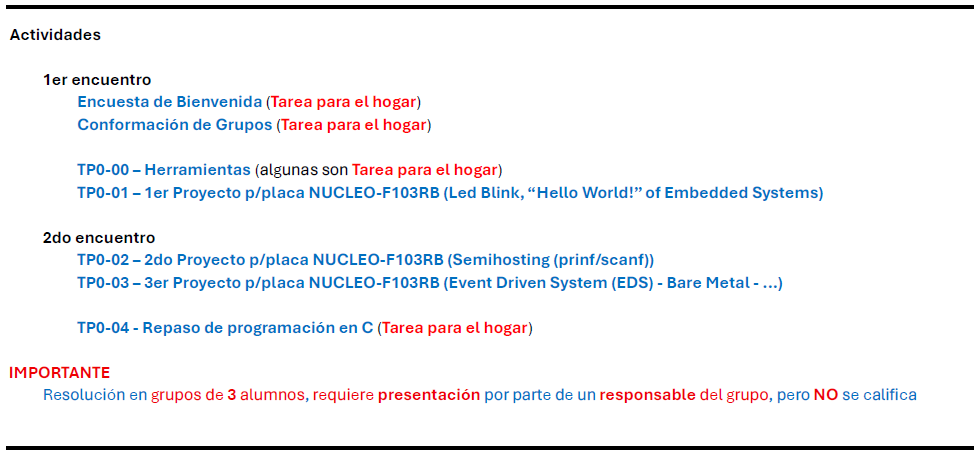AV_TALLER DE SISTEMAS EMBEBIDOS
Perfilado de sección
-
-
TP0 - Herramientas TareaApertura: lunes, 18 de agosto de 2025, 00:00Cierre: lunes, 8 de septiembre de 2025, 00:00
Favor de descargar el enunciado de la tarea (TdSE_Guia_TP0-Herramientas.pdf - file), desarrollar las consignas del enunciado descargado y agregar en Comentarios de la Entrega lo solicitado en las consignas del enunciado descargado

-
Encuesta de Bienvenida Cuestionario
-
Conformación de Grupos Cuestionario
-
